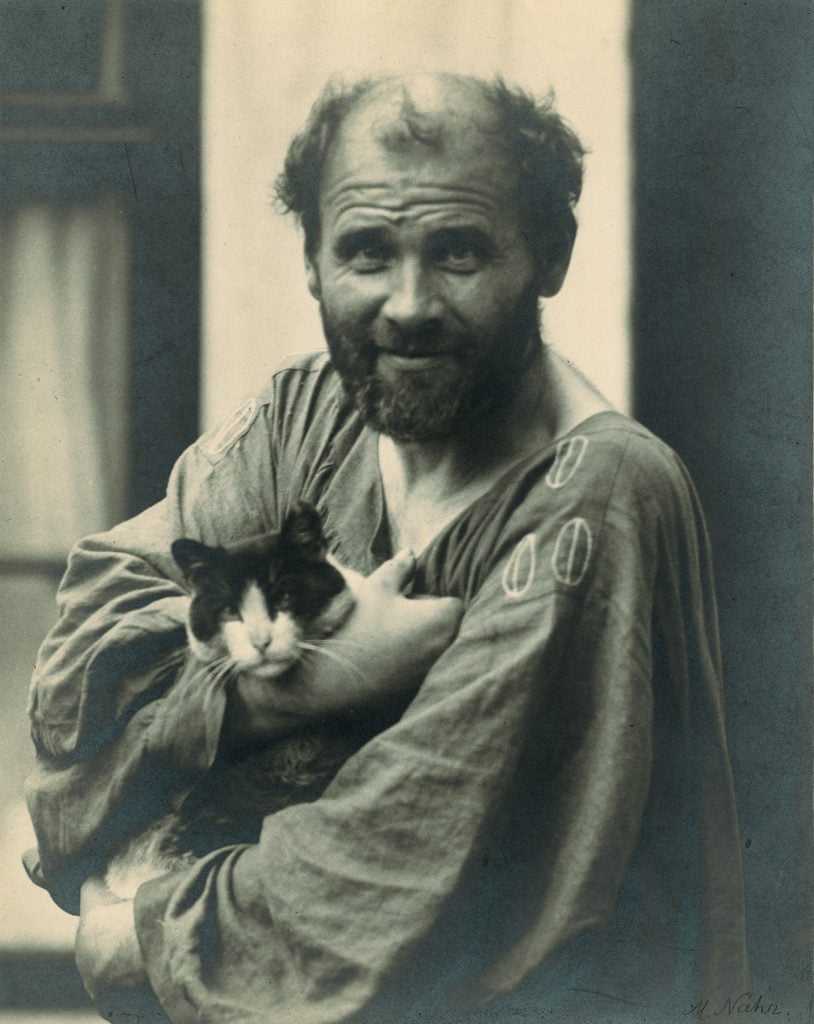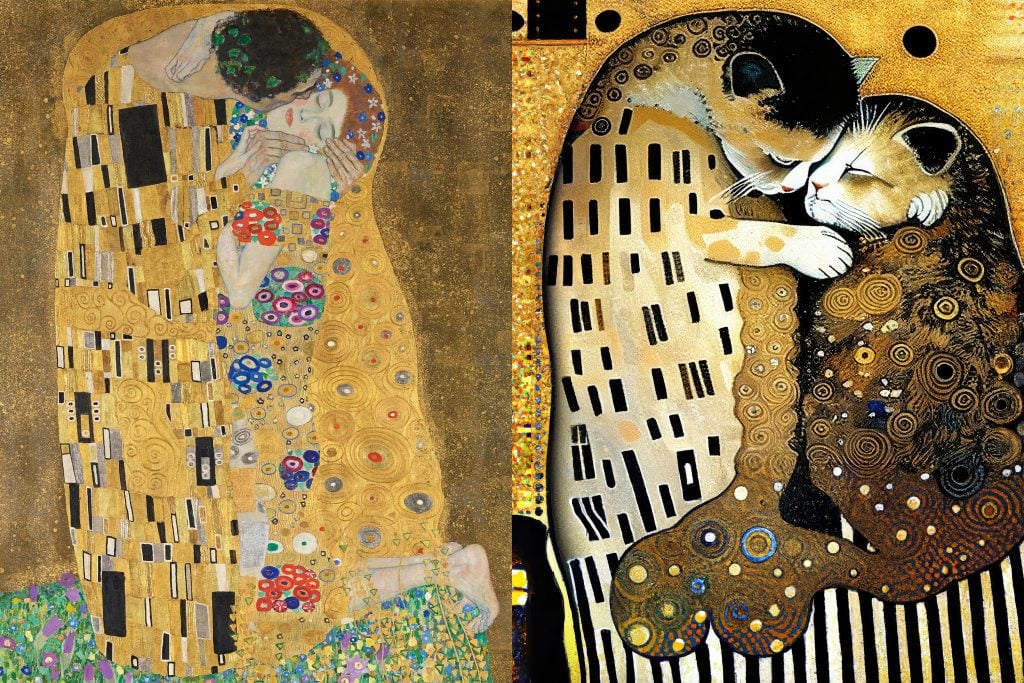Art World
Art Bites: Gustav Klimt Was a Cat Daddy
Gustav Klimt really loved cats. Known as the "crazy cat lady" of the art world, he let them roam his studio freely, despite the chaos and damage they wrought. But did he use cat pee as a fixing agent?

One indisputable fact about the internet is that it has been taken over by cats. But such feline infatuation has a long history—particularly in the art world. Case in point: renowned Austrian artist Gustav Klimt loved cats so much that he let them take over his studio, too. When art critic Arthur Roessler visited the painter’s studio, he was reportedly shocked by the conditions he met.
“As I sat with Klimt and rummaged around in a heap of papers, surrounded by eight or 10 meowing, purring cats, play fighting with each other, so much so that the rustling study sheets just went flying, I asked him, puzzled, why he tolerated such antics spoiling hundreds of the most beautiful drawings,” Roessler wrote.
Klimt was pointedly unbothered by the chaos around him. “No, my friend, even if they crumple and tear one or the other pieces of paper,” he told the critic. “It doesn’t matter; they only pee on the others, and, you know, it makes the best fixing agent.”
There’s no knowing if Klimt did use cat pee as a fixative on his work. There’s no scientific proof that feline urine is at all useful as a fixation agent. In fact, the substance would more likely ruin artwork than improve it. More believable is that Klimt had made the claim in jest, leaning into his reputation as an obsessive cat-lover.
The painter was equally known for his reclusiveness. Klimt used his art to lift him out of poverty, moving from the Austrian countryside to the glamorous city of Vienna. Though they were buying up his work, Vienna’s wealthy social elite shunned him. His country dialect and mannerisms were deemed unfit for high society. He also never participated in the cafe culture that was central to the lifestyle of European artists.
It’s no surprise, then, that the painter turned to his furry friends for company. An iconic photo, shot by photographer Moriz Naehr, depicted him standing outside his studio, wearing one of the floor-length caftans he painted in, cradling his beloved cat Katze.

Left: Gustav Klimt, The Kiss (1907–1908). Collection of the Belvedere, Vienna. Right: A.I. picture generated on Midjourney by Vienna Tourist Board. Photos: © Belvedere Museum and Vienna Tourist Board.
Remarkably, despite his deep affection for them, Klimt never painted cats. Last year, however, the Vienna Tourist Board mashed up the internet’s love of cats with Klimt’s when they launched their campaign titled UnArtificial Art. They used A.I. to reimagine Klimt’s iconic artwork, The Kiss, replacing the lovers in the painting with sorrowful felines in a tender embrace.
What’s the deal with Leonardo’s harpsichord-viola? Why were Impressionists obsessed with the color purple? Art Bites brings you a surprising fact, lesser-known anecdote, or curious event from art history. These delightful nuggets shed light on the lives of famed artists and decode their practices, while adding new layers of intrigue to celebrated masterpieces.





